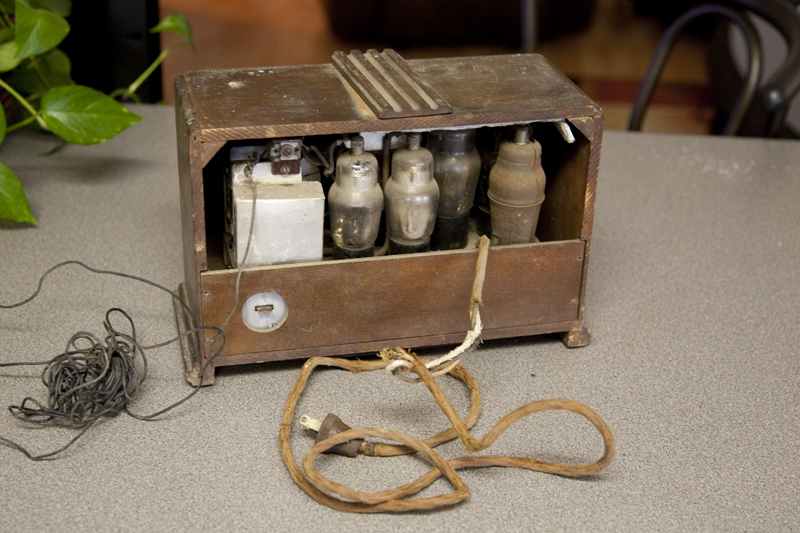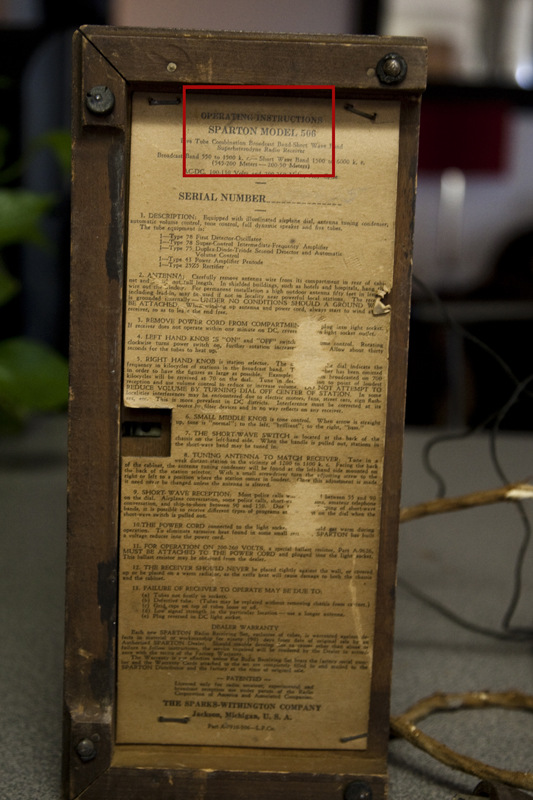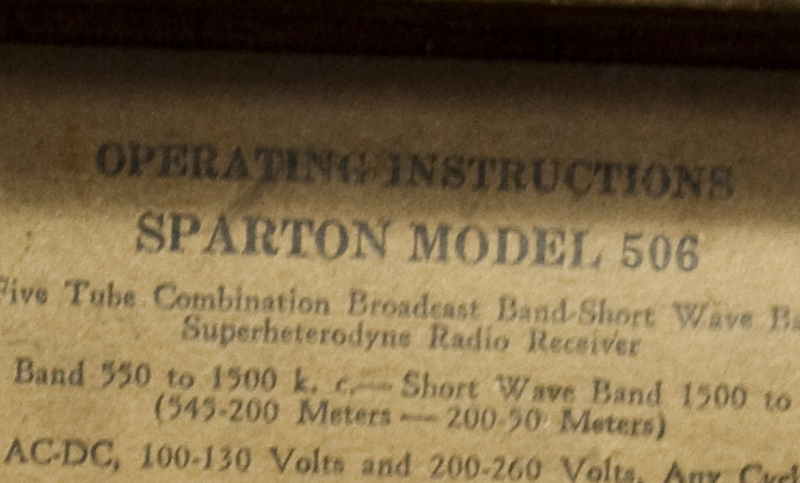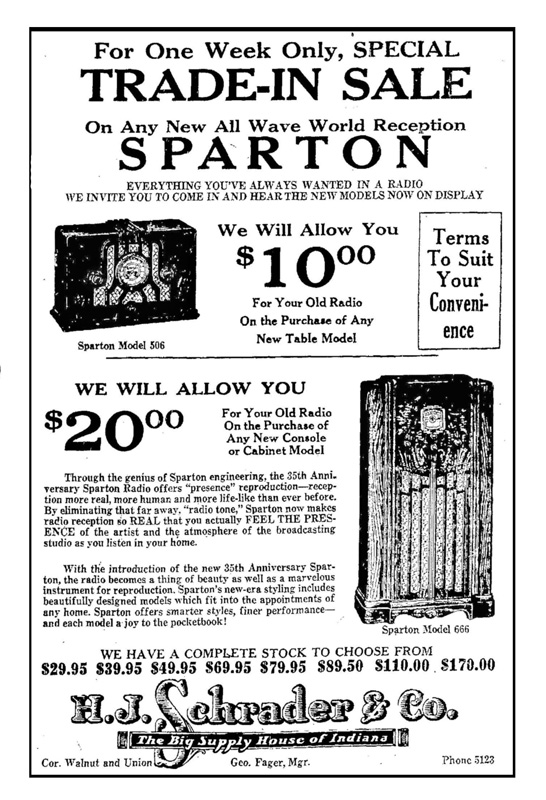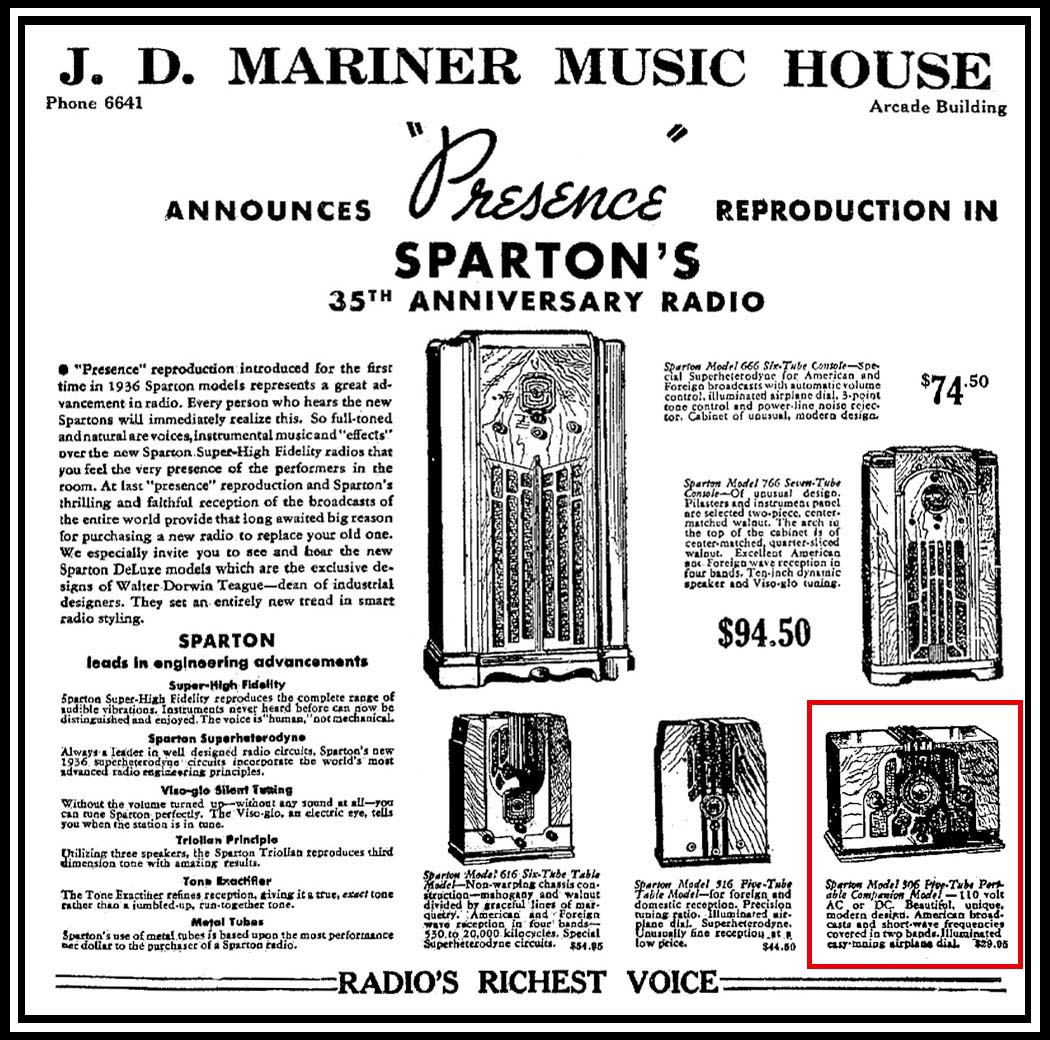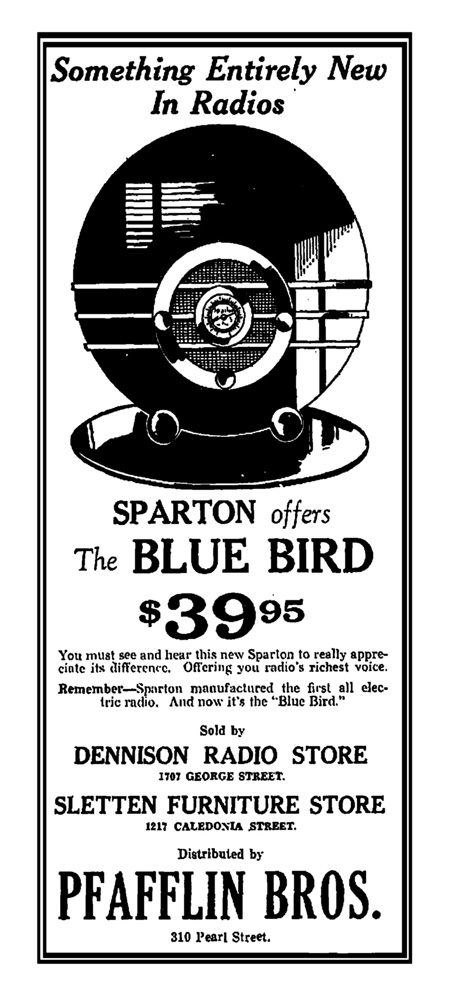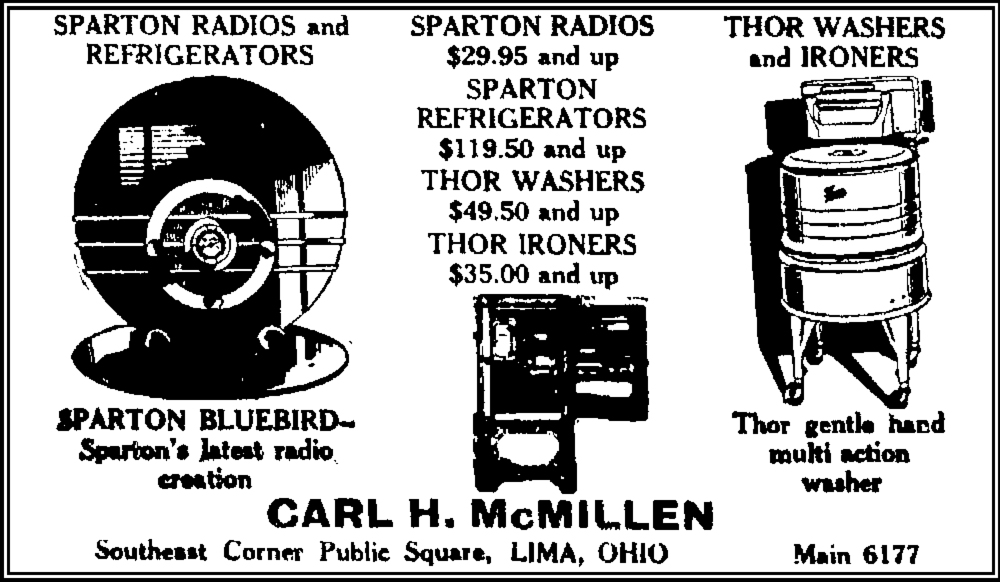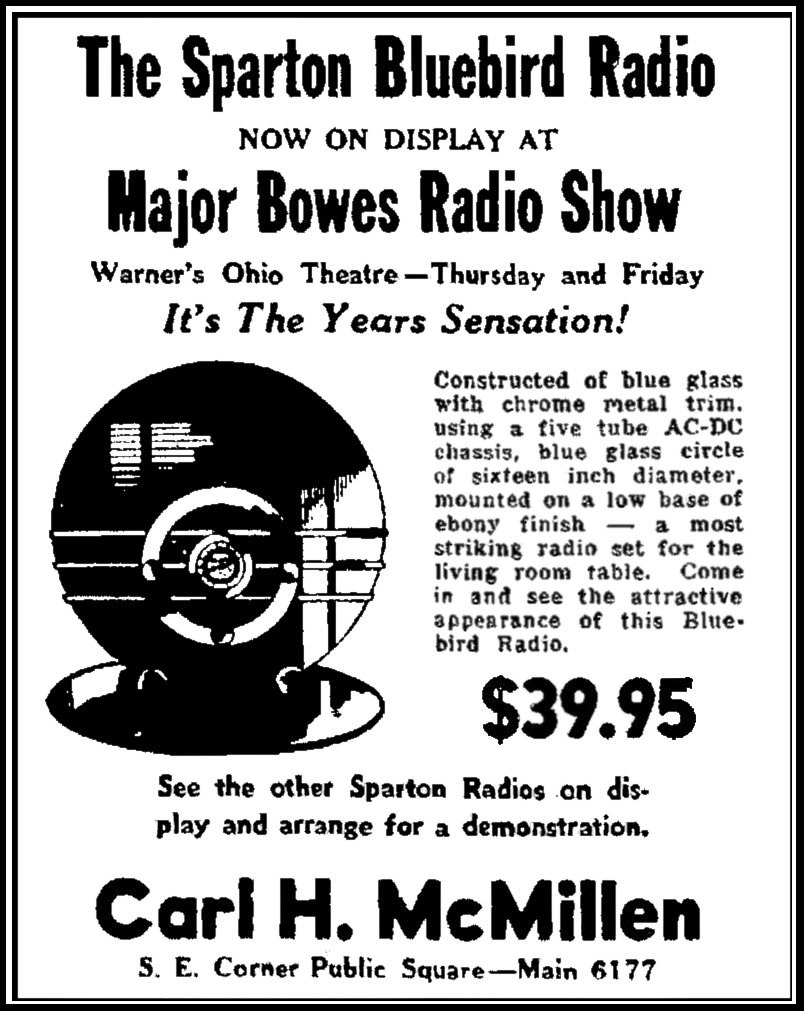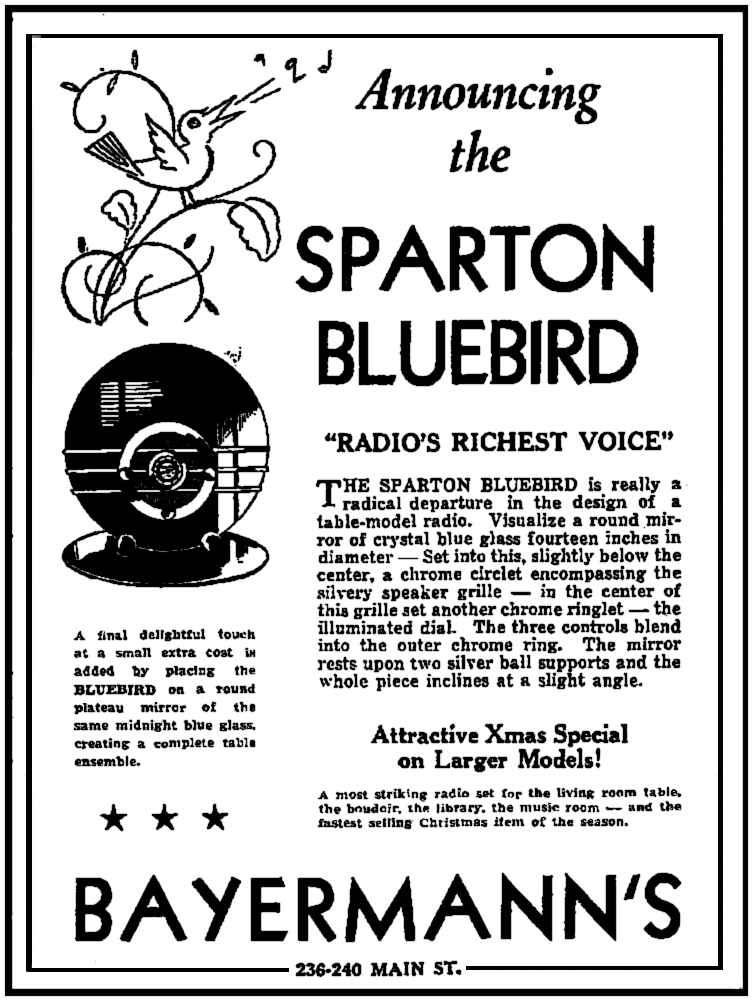|
Sparton Model 506 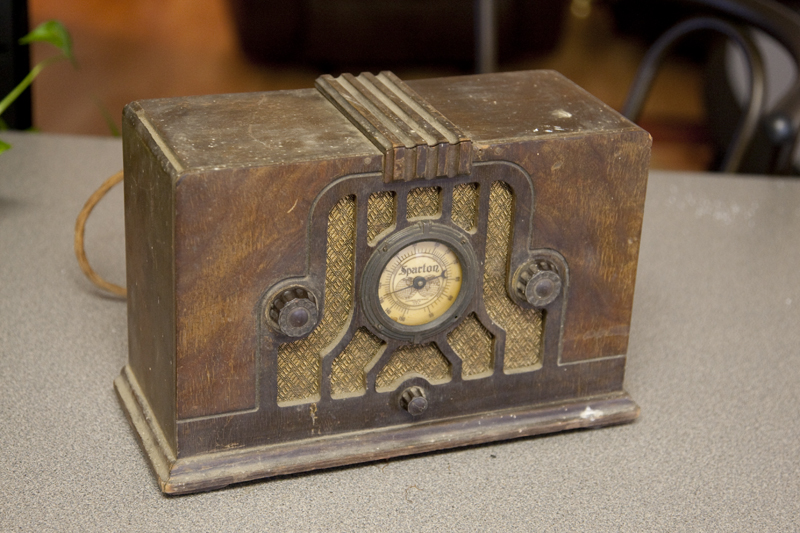
When the radio arrived and I unpacked it, I turned it over and found a sheet stapled to the bottom with operating instructions for the Sparton 506. I had always been under the impression that the Bluebird began as a 506 and was updated to the 566.
I own a Bluebird (with no model number on the set) and when I restored the set, the only schematic I could find was a Rider schematic that referenced the Sparton 506 and it appeared to be accurate. Later, I found and purchased a Sparton Service Manual No. 2. Now, looking back through the Sparton Manual, I realized that it referenced BOTH the 506 and 566 to the same schematic. That would indicate that the 566 Bluebird was not an upgraded 506 but a separate model using the same chassis. Otherwise, the schematic for the 566 should be different.
Now, holding the small wooden radio in my hands, I realized conventional wisdom concerning the Bluebird was wrong but the only information I could find showed the Bluebird as a model 506. Frustrated and a bit confused, I placed the little mystery on the shelf and forgot about it for a while.
One day I found a web site that had archived digital copies of old newspapers going back to about 1930 and the 506 leaped back to the forefront in my mind. If I couldn't find any current information relating to this set, maybe I could return to the past. I joined and began searching the years 1935 and 1936. I found ads for the Nocturne (model 1186), numerous ads for models 666, 766, 966, 516, 616, finally the Bluebird (but no model number) and then there it was: the Model 506. This was the proof I was looking for. Manufacturers do not release different items with the same model number, let alone in the same year. That would only lead to mass confusion. The Bluebird was never a 506. The 506 was released for the same model year as the Bluebird which made the Bluebird the 566 and only the 566. The 506 was part of the original lineup of 1936 models released about mid-year 1935 while the Bluebird was one of the Walter Teague designs added in September of that year as a separate promotion.
Looking back over the ads I had found, I noticed another point of interest. All of the radio models for which I had found ads for the 1936 model year ended in 6. More searching for the years 1937-1938 showed that this last digit was the model year in Sparton's numbering scheme. Having already restored a Nocturne (1186), a Bluebird (thought at the time to be a 506), a 557 and a 558 sled, I was aware that the first digit (or 2 digits if the model number was 4 digits long) indicated the number of tubes used in the chassis (the tuning eye tube, if present in the model, is not counted as a chassis tube). As for the middle number, this was not as certain. A 1 would indicate a tombstone model table set (516, 616, 716) while changing it to a 6 (666, 766) would indicate a console model utilizing the same chassis. This holds true until you get to the 566 Bluebird (the 516 uses a different chassis and the Bluebird is not a console). All other 1936 models with a 6 as the middle digit are consoles. (Actually, all other models with a number larger than 5 in the middle position are consoles or consoles with phonograph but only the 1 and 6 utilize the same chassis) Possibly this can be attributed to the release of the Walter Teague-designed models but it still destroys the absolute reliability of the scheme. It may be that since Sparton made no 5 tube consoles at the time, it was an just open area to stick the Bluebird. I'm relatively certain the original intent was to designate the type of set. Sets with an "X" following the model number were manufactured for export and generally had transformers which could be rewired to handle different line voltages. An "M" following (or sometimes leading) the model number indicates an existing 1936 model that had begun shipping with metal tubes instead of the original glass. In some of these models, the tube types and circuitry have been changed from the original as well leading to the publishing of a new schematic for the "M" model.
Back to the Bluebird, as I stated above, it was never a model 506. The ads below show the Bluebird advertisements (showing no model number) but also the 506 during the same late 1935 to early 1936 period. How did the Bluebird come to be confused with the Model 506? I can only use my own experience as a theory. When I was beginning restoration on my Bluebird (which has no model number on the set), the only schematic I could find was from Rider and it showed it as the 506. There was no schematic for the 566 but the 506 worked for my purposes and I was unaware of the existence of this small wooden set. My guess is that others faced the same scenario so the accepted knowledge became that the 506 was a Bluebird. The fact that there were some Bluebirds with a model number of 566 on the set probably led to theories about multiple chassis designs or modifications. One example of a Bluebird with the model number on the set is here and the set's owner has also come to the same conclusion about the 506 and has some documentation I didn't have.
But how did Rider get it wrong? I recently found another Sparton Service Manual No. 2 which has a different schematic page than mine. The voltage resistance chart is the same as mine and shows it is for the 506, 566 and 594 but on the schematic page, it does not show the 566 but the 506 twice in the title. Apparently some were published like this and if Rider received this schematic, they may not have been willing to assume it was a mistake and just pointed Bluebird schematic hunters to the 506 schematic.
The pictures show the unrestored Sparton Model 506 as I received it. I have yet to complete the restoration but will post new pictures whenever it is done.
Please note: All images on this site are protected by Copyright and are not intended for other use without permission. The ads on these pages are not as they were scanned from the original pages but have all been considerably enhanced to make them more legible.
Sparton 506 Schematic and service documentation |
